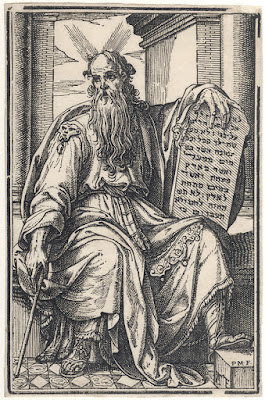
The first chapter of Exodus sets the scene for the dramatic arrival of Moses, the boy who was spared and became one of the greatest prophets, the one who knew God face to face (Deut. 34:10). Following Jacob’s death, God’s people multiplied in the land of Egypt. But the Egyptians recognized that this growing Hebrew population might threaten their rule and so subjected the Hebrews to be their slaves and ordered that every Hebrew boy should be thrown into the Nile. This is the context into which Moses is born.
By God’s hand, Moses is preserved in a basket wherein his mother placed him on the Nile River, and Pharaoh’s own daughter finds him. Moses is given the upbringing of an Egyptian, but he is caught in the crosshairs between his kin and his house when he defends a Hebrew servant suffering under his taskmaster. Moses kills the Egyptian and, coming to realize that he is no longer safe in Pharaoh’s house or with his people, her runs.
Thus begins the rest of the book of Exodus, which chronicles Moses’ life as prophet, lawgiver, plague-worker, and guide to God’s people. God sends Moses to be his mouthpiece before Pharaoh, so Moses obeys and tells Pharaoh to release God’s people from slavery. Ten plagues later—each a witness to the powerlessness of the Egyptian gods—Pharaoh releases God’s people who promptly flea to the desert after crossing the Red Sea on dry ground.
But before they leave, Moses issues God’s command to the people that they should mark their doorposts and eat a meal in haste so that the Angel of Death would pass over. And so they leave their homes, cross the sea, and wander in the wilderness under Moses’ direction from the Lord until the time has come for them to enter the Promised Land.
It is not given to Moses, however, to enter with the Israelites. Instead he died and was buried in the land of Moab.

Brief History
Moses was not only the mouthpiece of God for his contemporaries in ancient Israel. As the author of the first five books of the Bible—the Pentateuch—he is a prophet for God’s people of all times who read and believe his words as God’s own revelation.
In these books of Moses we find the story of salvation, told over and over again in types and foreshadowings of the one who is the salvation of the world, Jesus Christ our Lord. Each episode teaches the Christian about what Jesus has done and how he has done it: destroying death by death, rescuing his people through water, nourishing them at the paschal feast, dwelling with them, and so much more.
While many of the Old Testament commemorations listed in the Lutheran Service Book‘s sanctoral calendar are of relatively new origin—often within the twentieth century—the commemoration of St. Moses on September 4 appears to be significantly older, dating back at least to Wilhelm Loehe’s martyrology of the nineteenth century and likely earlier.

Collect
O Almighty God, who hast knit together Thine elect in one communion and fellowship in the mystical body of Thy Son Jesus Christ, our Lord; grant us grace so to follow Thy blessed saints in all virtuous and godly living, that we may come to the unspeakable joys which Thou hast prepared for those who unfeignedly love Thee; through the same, Jesus Christ, Thy Son, our Lord, who liveth and reigneth with Thee and the Holy Ghost: ever one God, world without end. Amen.
Resources
Issues, Etc. interview with the Rev. Dr. Kevin Golden on Moses
Propers found in Daily Divine Service Book: A Lutheran Daily Missal, edited by the Rev. Heath Curtis
References:
1. Weedon, William. Celebrating the Saints. Concordia Publishing House. 2016.
Images:
1. Moses, Geronima Parasole, Germany, 1622.
2. The Finding of Moses, Sébastien Bourdon, France, ca. 1655
3. Moses and the Brazen Serpent, Peter Paul Rubens, Belgium, 1610.
Some links might be affiliate links which means we may receive a small commission at no extra cost to you. As an Amazon Associate we earn from qualifying purchases.



